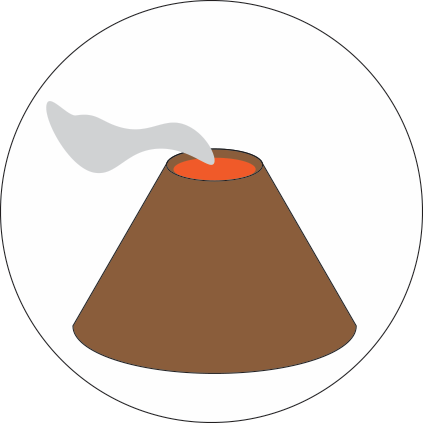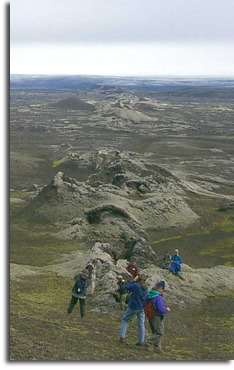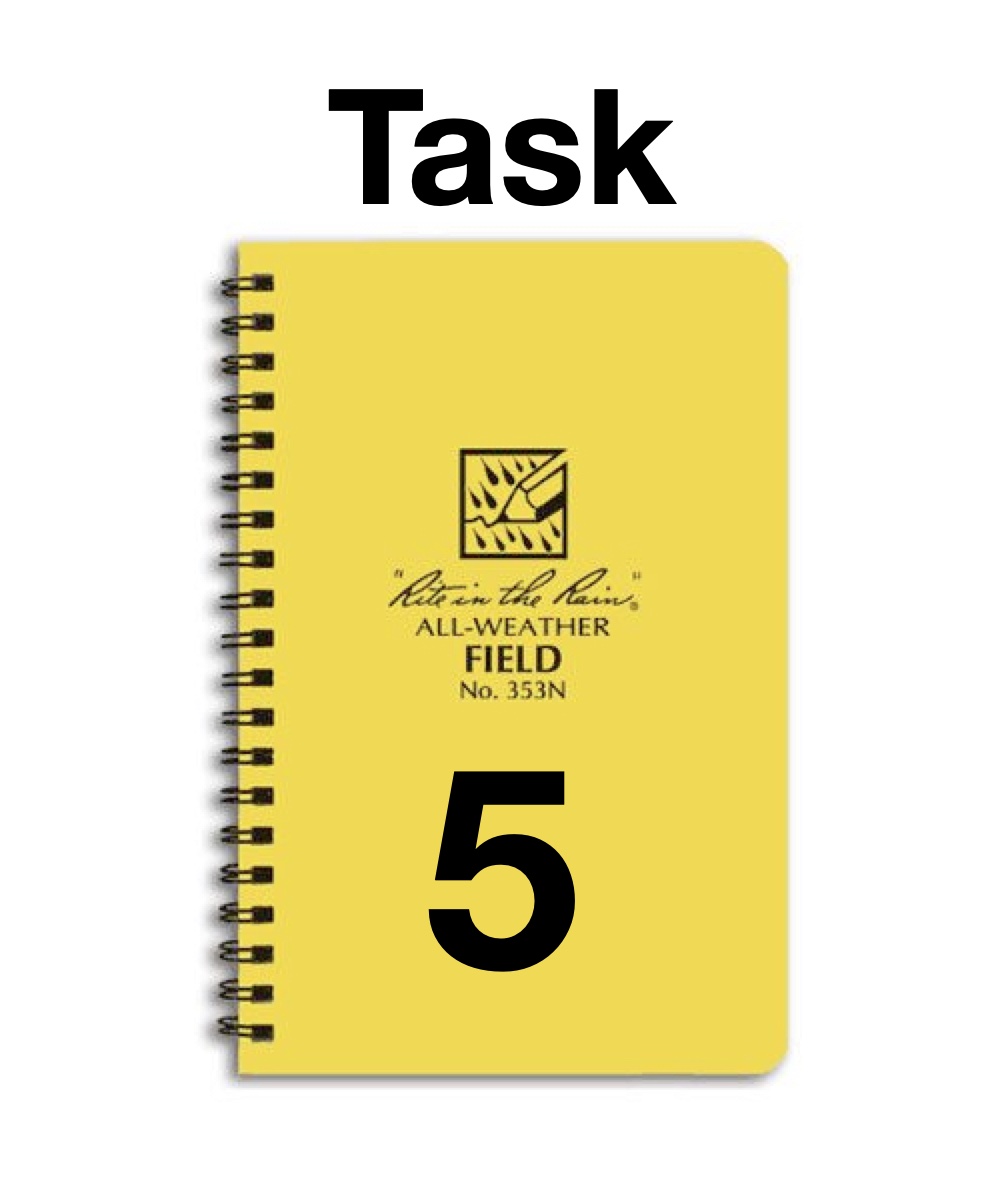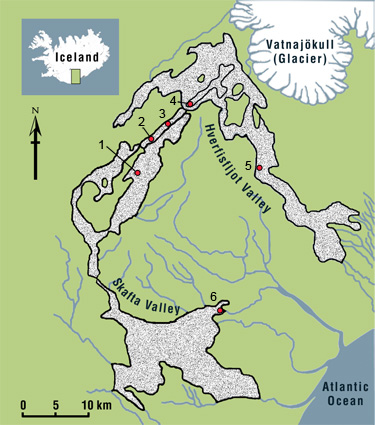


In this part of the exercise, you will visit several localities in SE Iceland that were impacted by the Laki 1783 fissure eruption and make observations about the lava flows.
At these localities you will use panoramic images to get 360° views of the terrain at each site. This will allow you to have a complete view of the landscape, with the ability to zoom in on interesting features and details of the deposits.
The main objective of this part of the exercise is to identify the vent locations for the 1783-1784 eruptions (the sites where lava emerged from the ground), and to examine the types of lava flows that were produced by this great eruption.
It will help you to think back to the different styles of eruptions and lava flows, and their deposits, that you observed and described in Tasks 2 and 3 earlier in this exercise.
Since the time of the eruption in 1783, the surface of the lava flows has changed.
Most notably, the lava is no longer 'fresh' and has been colonized by vegetation.
Most of the lava flows are now covered by a soft layer of moss, which is discussed in the video below.
It's time to venture out into the field at the Laki fissure, where you will observe firsthand the deposits left by the eruption.

For Task 5, please do the following:
1. Visit the six field localities by clicking the red dots on the map below.
2. Describe the features that you see, remembering how deposits looked for different eruption environments and lava flow types, and answer the questions in your field notebook.

When you have visited all 6 sites and recorded your observations, please proceed to the next step.